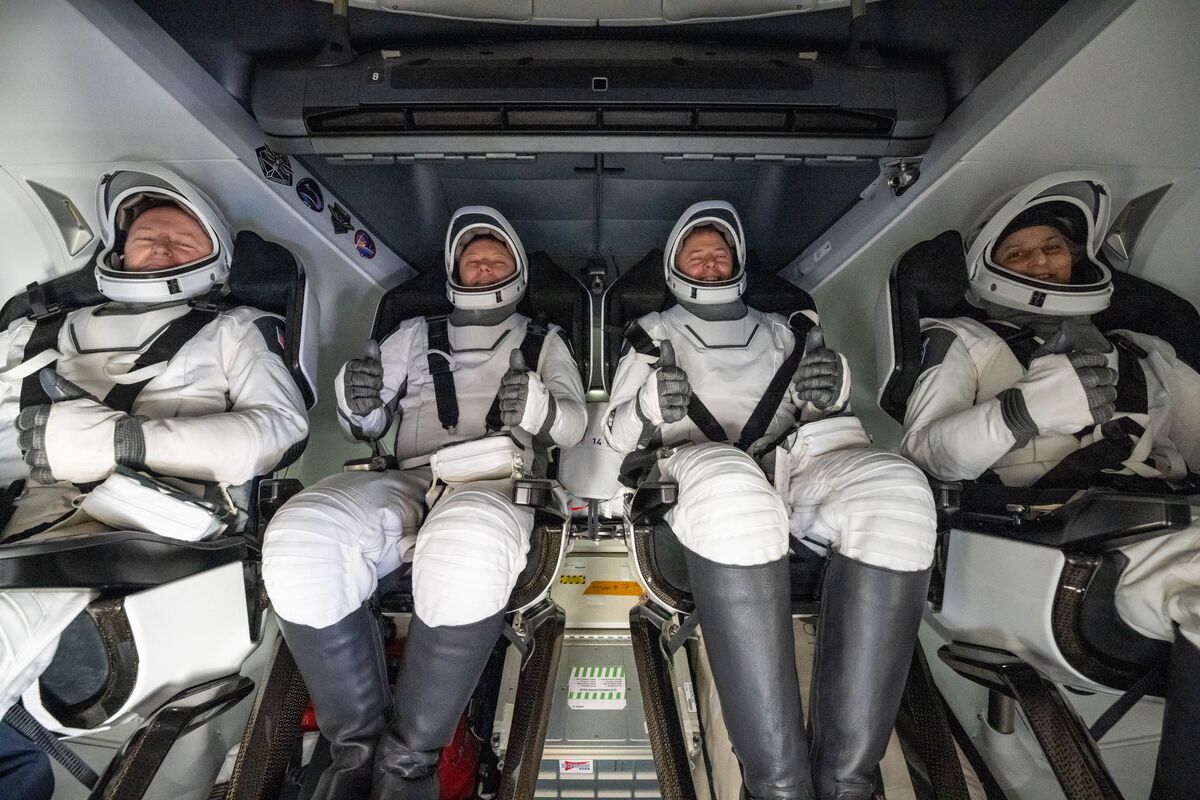Background
Autoimmune encephalitis (AE) is a severe, potentially life-threatening disorder caused by immune-mediated brain inflammation. It presents with neurological and psychiatric symptoms, including seizures, which affect patients’ quality of life and prognosis. The annual incidence of encephalitis is estimated at five to eight cases per 100,000 individuals, with autoimmune causes accounting for 40–50% of cases with an unknown etiology.1 Common clinical features include seizures, altered consciousness, neuropsychiatric disturbances, and cognitive impairment, which may vary depending on the AE subtype.2 Despite these well-established clinical symptoms, there remains a lack of comprehensive studies directly comparing AE patients with seizures to those without, particularly in terms of clinical features and risk factors. However, comprehensive studies directly comparing these two groups remain limited.
Seizures are a common and debilitating complication of AE, often associated with poor prognosis, prolonged hospitalization, and increased risk of cognitive decline. For example, Irani et al demonstrated that in patients with LGI1 antibody-associated encephalitis, early-onset faciobrachial dystonic seizures predicted the development of cognitive impairment, which could be prevented with timely immunotherapy.3 These findings underscore the importance of early seizure recognition and immunological management in altering disease outcomes Moreover, epilepsy and autoimmune diseases frequently co-occur, possibly due to shared pathophysiological mechanisms such as antibody-mediated synaptic dysfunction, BBB disruption, and chronic neuroinflammation.4 However, the specific immune mechanisms that predispose AE patients to seizures remain poorly understood.
Eosinophils, traditionally known for their role in allergic and parasitic diseases, have recently been implicated in neuroinflammation and epilepsy through the release of cytokines, granule proteins, and neuroactive mediators. These mechanisms can influence neuronal excitability, contribute to blood–brain barrier (BBB) dysfunction, and promote epileptogenesis.5,6 Although data remain limited, such findings provide a biologically plausible rationale for exploring eosinophils as a seizure-related biomarker in autoimmune encephalitis.
This study aims to deepen our understanding of AE pathophysiology, particularly in identifying high-risk patients. By elucidating key risk factors and clinical markers, including eosinophil counts, the findings could improve diagnostic accuracy, facilitate early intervention, and guide more effective treatment strategies for AE, particularly in patients at higher risk for seizures.
Methods
Participants
This study retrospectively enrolled 106 patients diagnosed with AE at the Department of Neurology, First Affiliated Hospital of Anhui Medical University, between January 2020 and January 2025. Patients were categorized into two groups based on the presence or absence of seizures. Numerical details regarding age, sex, and subgroup allocation are presented in the Results section.
The patients who tested negative for AE-specific antibodies in cerebrospinal fluid (CSF) and/or serum were also included in the study. These patients had Antibody Prevalence in Epilepsy and Encephalopathy (APE2) scores≥4, indicating a high likelihood of autoimmune antibody positivity.7–10 Moreover, these patients showed a positive response to immunotherapies, further supporting the diagnosis of AE. Based on these factors, they were included in the final cohort.
The inclusion criteria for the study were as follows, in accordance with the diagnostic criteria for AE:
- Compliance with the diagnostic criteria outlined in the “Chinese Expert Consensus on the Diagnosis and Treatment of Autoimmune Encephalitis” (2022 edition).11
- Positive detection of AE surface neuron-specific antibodies in CSF and/or serum, serving as key biomarkers for diagnosing AE.
- In cases where AE-specific antibodies were not detected in CSF or serum, the diagnosis was supported by typical clinical symptoms consistent with AE and a positive response to first-line immunotherapies, including intravenous methylprednisolone (IVMP), intravenous immunoglobulin (IVIG), or plasmapheresis.
The exclusion criteria for this study were as follows:
Seizures fully attributable to pre-existing epilepsy of a different etiology.
- The presence of antibodies to other central nervous system (CNS) diseases that could confound the diagnosis of AE.
- Exclusion of other potential causes, such as infectious encephalitis, cerebrovascular diseases, or brain tumors, based on clinical evaluation and relevant diagnostic tests.
The control group consisted of 34 patients with AQP4-IgG-positive neuromyelitis optica spectrum disorder (NMOSD). NMOSD was selected as the control condition because it represents an autoimmune demyelinating disease characterized by AQP4-IgG antibodies, with a low risk of seizures and no neuronal autoantibody involvement.12 This allows for clearer differentiation of seizure-specific immune signatures in AE, making it suitable for distinguishing the risk factors in AE from broader immune-inflammatory responses.
Inclusion Criteria for the Control Group:
- NMOSD was diagnosed based on the 2006 Wingerchuk criteria, with AQP4-IgG seropositivity and a history of longitudinally extensive myelitis (≥3 vertebral segments) or optic neuritis.13–15 Age and sex matching.
- No history of seizures, cognitive or psychiatric disorders.
Exclusion Criteria for the Control Group:
- Overlap with other autoimmune diseases.
- Recent immunosuppressive treatment.
- Incomplete clinical or laboratory data.
The control group was matched for admission time, and peripheral blood (PB) indicators were compared with the those of AE group. Demyelinating diseases were chosen as the control because they rarely present with seizures, thereby facilitating a more accurate evaluation of seizure risk factors associated with AE.
This study was approved by the Institutional Review Board of Anhui Medical University (Ethical approval number: 2022116, date: 2022.03.01), and informed consent was waived due to its retrospective design and use of anonymized data.
Clinical Data
Clinical features and laboratory results for the enrolled patients were retrospectively collected from the electronic medical records system. The clinical features included demographic information (sex and age at onset), prodromal symptoms, and predominant symptoms. The laboratory results included CSF findings and PB cell counts.
Clinical Features
Prodromal symptoms refer to early signs or symptoms that precede the onset of the typical disease manifestations.16,17 These prodromal symptoms can vary among patients and often serve as early indicators of the disease. In AE, the prodrome often includes non-specific signs such as fever, headache, or malaise, which may be subtle and easily overlooked or misattributed to other causes.
The predominant symptoms refer to the primary clinical manifestations observed during the acute phase of the illness, which are frequently associated with neurological impairments. These may include seizures, altered consciousness, cognitive dysfunction, or psychiatric symptoms, which are more clearly identifiable and typically serve as hallmark for diagnosing AE with seizures. However, it is important to note that the recognition and interpretation of these symptoms can be influenced by factors such as the patient’s ability to communicate, cognitive status, and concurrent conditions. Therefore, the classification of these symptoms is not entirely objective and may vary based on individual circumstances.
Laboratory Results
Laboratory results consisted of CSF findings and PB cell counts, both of which were conducted within 24 hours of admission, prior to the initiation of any immunotherapy, including IVIG. This timing ensured that antibody detection results were not influenced by potential passive transfer of antibodies through IVIG administration.18 CSF findings included measurements of opening pressure, leukocytes, protein, chloride and glucose levels, as well as the detection of AE-related antibodies in CSF and/or serum. PB cell counts included leukocytes, neutrophils, eosinophils, basophils, lymphocytes, monocytes, and albumin levels. Blood-brain barrier (BBB) dysfunction was assessed by calculating the ratio of CSF albumin to serum albumin. A ratio exceeding the normal value indicated BBB dysfunction.19–21The normal value for this ratio was calculated using the following formula:
where b0 represents the constant term, b1 to bn are the regression coefficients for specific covariates, and x1 to xn represent the corresponding covariate values. A P-value < 0.05 was considered statistically significant for all analyses.
Results
Clinical Data
Demographic Information
There were 54 males and 52 females, with a mean age at onset of 44.01 ± 16.732 years (range: 16–80 years), 48 in the seizure group and 58 in the non-seizure group. Among the 106 AE patients, the majority were seropositive, with AE-related neuronal antibodies detected in either CSF or serum. A subset of patients (n = 14) tested negative for antibodies but were clinically diagnosed with probable AE based on an APE2 score ≥ 4 and a favorable response to first-line immunotherapies, in accordance with expert consensus recommendations. These patients were included in the analysis.
No significant differences in age or sex distribution were observed among the three groups. However, the seizure group exhibited a younger age at onset compared to the non-seizure group and the control group (Table 1).
 |
Table 1 Comparison of clinical features in seizure group, non-seizure group and control group
|
Clinical Features
Prodromal symptoms, such as fever and headache, were significantly more prevalent in the seizure group than in the non-seizure and control groups (P<0.05).
About predominant symptoms, the seizure group was predominantly characterized by seizures and impaired consciousness (25.0%), while the non-seizure group was primarily associated with headache (31.0%), cognitive impairment (41.4%) and psychobehavioral abnormalities (48.3%). In contrast, the control group exhibited motor dysfunction (29.4%), sensory disturbances (73.5%) and visual disturbances (32.4%). Dizziness was reported in 13.8% of patients in the non-seizure group, compared to 8.3% in the seizure group and 8.8% in the control group, but the difference was not statistically significant (P=0.611) (Table 1).
The antibody distribution among the 106 AE patients was as follows: anti-NMDAR (n = 39), anti-LGI1 (n = 31), anti-GABABR (n = 8), anti-mGluR5 (n = 3), anti-IgLON5 (n = 2), and anti-CASPR2 (n = 1). Additionally, 14 patients were seronegative but fulfilled the diagnostic criteria for probable AE based on an APE2 score ≥ 4 and a favorable response to first-line immunotherapy. Eight patients tested positive for mixed or other rare antibodies (eg, AMPAR1/2, NMDA+mGluR5, GABAB+NMDAR) and were grouped as “Other”.
Among the 48 patients who experienced seizures, 33 had generalized tonic-clonic seizures (GTCS), 14 presented with focal seizures, and 1 was admitted with status epilepticus (SE). Detailed subclassification into refractory or super-refractory SE (RSE/SRSE) was not documented and therefore not analyzed.
Laboratory results
In the analysis that included a control group of patients with NMOSD, one-way ANOVA and Pearson chi-square tests were used to compare laboratory results across the three groups.
Significant differences were observed among the three groups in CSF protein (>0.45 g/L), CSF glucose, BBB dysfunction, and PB eosinophil counts (all P<0.05). Laboratory data showed no significant differences in CSF pressure, leukocyte counts, chloride levels, or PB cell counts (including leukocytes, neutrophils, basophils, monocytes, and lymphocytes) among the three groups (all P>0.05).
The seizure group exhibited a higher proportion of patients with elevated CSF protein levels (>0.45 g/L), increased CSF glucose, and higher PB eosinophil counts. Additionally, BBB dysfunction was more prevalent in the seizure group, with significant differences noted. Post-hoc multiple comparisons revealed significantly higher eosinophil counts in the seizure group compared to both the non-seizure and control groups. No significant difference in eosinophil counts was observed between the non-seizure group and the control group. These findings further underscore the potential role of eosinophil counts as a risk factor for seizures in AE, with notably higher eosinophil levels observed in the seizure group. These results suggest that elevated neuroinflammatory markers, including increased eosinophil counts, elevated CSF protein levels (>0.45g/L), and BBB dysfunction, may contribute to the pathophysiology of seizures in patients with AE (Table 2).
 |
Table 2 Comparison of Laboratory Results in Seizure Group, Non-Seizure Group and Control Group
|
Risk Factor Analysis
As the primary objective of this study was to identify risk factors for seizures in patients with AE, logistic regression and ROC curve analyses were performed by comparing the seizure and non-seizure groups. This approach was chosen to specifically evaluate seizure risk within the AE population, ensuring that the predictive model directly addresses the clinical question of interest.
The analysis identified several factors that effectively distinguished between patients with AE presenting with seizures and those without seizures: prodromal symptoms, impaired consciousness, psychobehavioral abnormalities, cognitive impairment, elevated CSF protein (>0.45g/L), PB eosinophil counts, and BBB dysfunction. Prodromal symptoms and PB eosinophil counts were strongly linked to an increased likelihood of seizures (P<0.05). In contrast, predominant symptoms, such as psychobehavioral abnormalities and cognitive impairment, demonstrated significant diagnostic value, with the presence of these symptoms being associated with a reduced risk of seizures (P<0.05).
PB eosinophil counts emerged as a significant independent risk factor for seizures in AE, with higher eosinophil counts notably increasing the likelihood of seizures (Table 3). The predictive model, which incorporated these independent variables, achieved an accuracy of 81.3% for diagnosing AE with seizures, 87.9% for AE without seizures, and 84.9% overall, demonstrating strong diagnostic discrimination.
 |
Table 3 Multivariable Regression Analysis of Risk Factors for Seizures in Autoimmune Encephalitis
|
ROC Curve Analysis
ROC curves were employed to evaluate the diagnostic value of eosinophil counts and the predictive model.
Eosinophil counts alone demonstrated moderate diagnostic value, with an area under the curve (AUC) of 0.667 (95% CI 0.563–0.772, P = 0.003), a maximum Youden’s index of 0.281, sensitivity of 0.333, and specificity of 0.948. The optimal cut-off value was determined to be 0.145 × 109/L, with values above this threshold indicating a higher likelihood of seizures.
When combined with other clinically relevant factors, the model achieved a significantly higher AUC of 0.921 (95% CI 0.872–0.970, P < 0.001), a maximal Youden’s index of 0.706, sensitivity of 0.792, and specificity of 0.914, reflecting excellent diagnostic performance. The model revealed that the presence of prodromal symptoms, impaired consciousness, CSF protein > 0.45 g/L, PB eosinophil counts > 0.145 × 109/L, and BBB dysfunction were strongly associated with the diagnosis of AE with seizures. In contrast, psychobehavioral abnormalities, cognitive impairment, eosinophil counts ≤ 0.145 × 109/L, CSF protein ≤ 0.45 g/L, and the absence of BBB dysfunction were more characteristic of AE without seizures. These findings emphasize the value of integrating clinical and laboratory markers for accurate differentiation between AE subtypes, with the predictive model offering valuable diagnostic support in clinical practice (Table 4 and Figure 1).
 |
Table 4 Diagnostic Performance of Risk Factors for Seizure Prediction Based on ROC Curve Analysis in Autoimmune Encephalitis
|
 |
Figure 1 ROC Curve Analysis of Eosinophils and the Joint Factors Predictive Model for Seizure Prediction in Autoimmune Encephalitis. (A) ROC curve of eosinophil counts alone, with an area under the curve (AUC) of 0.667. (B) ROC curve of the joint factors including prodromal symptoms, impaired consciousness, CSF protein >0.45 g/L, PB eosinophil counts >0.145×109/L, and BBB dysfunction, with an AUC of 0.921.
Abbreviations: ROC, receiver operating characteristic; AUC, area under the curve; CSF, cerebrospinal fluid; PB, peripheral blood; BBB, blood-brain barrier.
|
Discussion
This study aimed to investigate the clinical features and risk factors for seizures in AE by dividing AE patients into two groups: those with seizures and those without seizures. These groups were compared to a control group of patients diagnosed with NMOSD. Clinical data were used to identify potential predictors for seizures in AE, logistic regression and ROC curve analysis were employed to assess the predictive power of the model for seizure occurrence in AE patients. Our findings indicate that the seizure group exhibited a younger age at onset, more commonly prodromal symptoms, predominant symptoms (for example impaired consciousness), elevated CSF protein levels (>0.45g/L), higher CSF glucose, increased PB eosinophil counts, and more pronounced BBB dysfunction compared to both the non-seizure group and the control group. We particularly focus on eosinophil counts as a possible biomarker. These findings highlight the complex interplay of neuroinflammation, immune response, and neuronal excitability in AE-related seizures.
Unlike AE, NMOSD is not typically associated with autoantibodies directed against neuronal cell surface proteins, but rather with antibodies against myelin or AQP4 channels.22,23 Seizures are relatively uncommon in NMOSD,24 in contrast to their frequent occurrence in AE. This immunopathological and clinical distinction provides a meaningful comparator framework, enabling us to assess whether elevated eosinophil counts are uniquely associated with seizure generation in AE, or simply reflect generalized immune activation present in other autoimmune CNS disorders. In NMOSD, a condition characterized by a strong humoral immune response, eosinophil activation predominantly occurs in the CSF.25 This suggests that eosinophils are primarily involved in immune responses specific to certain autoimmune diseases and may not be as prominent in others. The inclusion of NMOSD as a demyelinating, non-neuron-targeting autoimmune control supports the specificity of eosinophilic involvement in AE-related seizures.
Although not statistically significant, the seizure group tended to have an earlier onset age than the non-seizure and control groups. This aligns with findings that immune-mediated disorders often present earlier in younger individuals,26 likely due to their more reactive immune systems and heightened nervous system plasticity, which may contribute to cortical hyperexcitability and seizures.
In terms of prodromal symptoms, patients in the seizure group were more likely to exhibit early signs of disease onset. These symptoms align with previous research indicating that prodromes are early, often nonspecific manifestations commonly observed in neurological disorders such as epilepsy and AE.16 Early recognition of these prodromal signs could facilitate timely diagnosis and intervention, potentially preventing seizure onset.
Regarding predominant symptoms, the seizure group was primarily characterized by seizures and impaired consciousness, the non-seizure group had more cognitive impairment and psychobehavioral abnormalities, the control group exhibited motor dysfunction, sensory disturbances and visual disturbances. Seizure group patients were more likely to have impaired consciousness, suggesting greater immune involvement in areas like the frontal and temporal lobes.27 In contrast, the non-seizure group likely experienced localized immune responses affecting cognitive and emotional regions, leading to psychiatric symptoms and cognitive deficits without seizures.
Laboratory results further reinforced the association between neuroinflammation and seizure occurrence in AE. The seizure group showed significantly higher levels of CSF protein (>0.45g/L), CSF glucose, eosinophil counts, and more pronounced BBB dysfunction. In comparison to the non-seizure group and the control group, the seizure group exhibited higher eosinophil levels, suggesting that this association may be specific to AE with seizures. Interestingly, no significant difference was found between the non-seizure AE group and the control group, highlighting eosinophils’ potential role as a distinguishing marker for seizure activity in AE.
In interpreting serological findings, it is important to consider the potential confounding effect of passive antibody transfer associated with IVIG administration. IVIG preparations may contain donor-derived antibodies, including thyroid and neural autoantibodies, which can transiently appear in patients’ serum and potentially lead to false-positive interpretations.18 To minimize this bias, all antibody testing in our study was conducted prior to the initiation of IVIG or any other immunotherapy. This methodological control ensured that the observed antibody profiles reflected the patients’ intrinsic autoimmune status, rather than artifacts introduced by treatment.
Epileptic seizures are closely linked to neuroinflammation, with glial cells like microglia and astrocytes playing a key role in regulating neuronal excitability.28 Neuroinflammation is common in conditions such as cerebral palsy, epilepsy, and autoimmune diseases.29,30 In AE patients with seizures, significant neuroinflammation markers, including elevated CSF protein levels (>0.45g/L), increased PB eosinophils, and BBB dysfunction, were observed. Eosinophils, typically associated with allergic responses, have been implicated in neuroinflammation and neurological injury in AE and epilepsy.31 They release pro-inflammatory cytokines and neuroactive mediators, influencing immune responses and contributing to neuronal damage and seizures.5,32 BBB dysfunction allows albumin leakage into the brain, activating the TGF-β pathway in astrocytes, which exacerbates inflammation and neuronal hyperexcitability.27 This dysfunction also permits immune cell infiltration, further fueling neuroinflammation and epilepsy development.6 These findings suggest that eosinophils could serve as a critical link between immune activation, neuroinflammation, and epileptogenesis in AE, positioning them as a potential target for therapeutic intervention.
Eosinophils may play a key role in seizures in AE by contributing to neuroinflammation and neuronal damage. In response to immune activation, eosinophils release cytokines, chemokines, growth factors, and other mediators that influence neuronal and glial cell activity, promote tissue remodeling, and increase neuronal excitability.5,33 These cells have been shown to promote tissue remodeling and neuronal branching, which, in the context of AE, may contribute to maladaptive neural plasticity and increased neuronal excitability.32 In AE, this may lead to maladaptive neural plasticity and heightened seizure risk. Eosinophils also interact with neurons through chemotaxis and adhesion molecules, potentially facilitating seizure foci.34 Additionally, eosinophil extracellular traps (EETosis), which release chromatin and cytotoxic substances, contribute to tissue damage and neuroinflammation, worsening neuronal hyperactivity and seizures.35 These findings suggest eosinophils are a critical link in immune activation, neuroinflammation, and epileptogenesis in AE, making them a potential therapeutic target.
While our analysis was limited to PB eosinophils, we acknowledge that CSF eosinophils may provide more direct evidence of central immune activity. However, due to the retrospective design of our study and the lack of routine CSF eosinophil testing in clinical practice, these data were not available. Pathophysiologically, peripheral eosinophilia may reflect systemic immune priming, leading to BBB dysfunction and facilitating eosinophil migration into the CNS. Once in the parenchyma, eosinophils may exacerbate neuroinflammation through the release of cytotoxic granules and cytokines, promoting neuronal hyperexcitability and seizures.36 Future prospective studies incorporating standardized CSF immunophenotyping could clarify the contribution of intrathecal eosinophils to AE pathogenesis.
BBB dysfunction is a major trigger for epilepsy, either through direct neuronal depolarization from potassium influx or indirectly via inflammation, vascularization, astrogliosis, and impaired potassium buffering due to serum protein leakage.37–39 Studies measuring CSF/serum albumin ratios in SE patients found increased BBB permeability, particularly in acute symptomatic SE.40,41 BBB integrity is essential for protecting the brain from inflammatory mediators and maintaining neuronal stability.42 In AE, BBB dysfunction is common, especially in seizure patients. It facilitates the entry of proinflammatory cytokines and chemokines, increasing neuronal excitability and promoting seizure propagation.27 Thus, BBB dysfunction plays a critical role in immune cell infiltration and neuroinflammation, potentially triggering or exacerbating seizures in AE.
It is important to emphasize that while eosinophils may play a contributory role, AE-related seizures are likely the result of complex interactions among various immune cells, cytokines, glial elements, and neural circuits. Future mechanistic studies are needed to disentangle these overlapping pathways.
The multivariable diagnostic model, combining clinical features and lab results, shows promise in identifying high-risk AE patients for seizures. Its sensitivity, specificity, and accuracy are crucial for clinical application. By integrating clinical data with inflammatory markers, clinicians could identify high-risk patients early and provide tailored interventions. However, validation in larger, multicenter cohorts is needed. Future research should refine the model by including additional biomarkers, clinical variables, and genetic factors to improve its predictive accuracy.
The inclusion of eosinophil counts was supported by comparisons with the control group, as the seizure group had significantly higher eosinophil levels. Including eosinophils in predictive models may enhance the identification of high-risk AE patients, especially those at risk for seizures.
This study has several limitations. First, its retrospective, single-center design may introduce selection bias and limit the generalizability of the findings. The lack of longitudinal follow-up also precluded evaluation of seizure recurrence, treatment response, and long-term biomarker dynamics. Second, although the multivariable model demonstrated strong predictive performance within the current cohort, it has not undergone external validation, limiting its clinical applicability. Third, clinical data such as detailed seizure classifications (eg, RSE/SRSE) and antiseizure medication regimens were not uniformly recorded, precluding reliable analysis of treatment response. Future multicenter prospective studies with standardized protocols are needed to validate and refine the model, improve its robustness by incorporating additional clinical and biological parameters, and clarify treatment-related outcomes.
Despite these limitations, our findings highlight a potential role for peripheral eosinophil counts as a biomarker for seizure risk in AE and lay the groundwork for future studies exploring immune mechanisms underlying seizure susceptibility in autoimmune neurologic disorders.
Conclusion
AE patients with seizures often present with prodromal symptoms, impaired consciousness, elevated CSF protein (>0.45g/L), increased PB eosinophil counts, and BBB dysfunction. These features identify high-risk patients and emphasize the need for early intervention. Increased PB eosinophil counts in the seizure group suggest that eosinophils may serve as a biomarker for seizure risk in AE. These features may help identify individuals at increased risk for seizure development. In particular, prodromal symptoms, altered mental status, and eosinophilia should prompt early recognition, closer clinical monitoring, and consideration of preventive strategies.
Future Directions
Future studies should focus on validating these findings in larger, multicenter cohorts and elucidating the mechanisms by which eosinophil-related inflammation contributes to seizure pathogenesis in AE. In particular, the potential value of early prophylactic ASM use in patients with high-risk features, such as prodromal symptoms and elevated eosinophils, warrants prospective evaluation. Eosinophil-targeted therapeutic strategies may also offer new avenues for seizure prevention and disease management.
Data Sharing Statement
The data that support the findings of this study are available from the corresponding author upon reasonable request.
Acknowledgments
This study was approved by the Institutional Review Board of Anhui Medical University (Ethical approval number: 2022116, date: 2022.03.01). As a retrospective study based on de-identified clinical data, the requirement for individual informed consent was waived by the ethics committee. All procedures were conducted in accordance with the ethical standards of the Declaration of Helsinki. Patient confidentiality was strictly protected throughout the study, all patient data were anonymized and handled in accordance with institutional privacy regulations. This work was supported by the Research Fund of the Basic and Clinical Collaborative Research at Anhui Medical University (grant numbers 2022xkjT30), the Anhui Institute of Translational Medicine (grant numbers 2023zhyx-C34 and 2023zhyx-C65), the National Natural Science Foundation of China (grant numbers 82371201 to L.W), and the Anhui Province Clinical Medical Research Transformation Special Project (grant numbers 202204295107020024).
Author Contributions
All authors made a significant contribution to the work reported, whether that is in the conception, study design, execution, acquisition of data, analysis and interpretation, or in all these areas; took part in drafting, revising or critically reviewing the article; gave final approval of the version to be published; have agreed on the journal to which the article has been submitted; and agree to be accountable for all aspects of the work.
Disclosure
The authors report no conflicts of interest in this work.
References
1. Granerod J, Ambrose HE, Davies NW, et al. Causes of encephalitis and differences in their clinical presentations in England: a multicentre, population-based prospective study. Lancet Infect Dis. 2010;10(12):835–844. doi:10.1016/S1473-3099(10)70222-X
2. Dalmau J, Graus F. Antibody-mediated encephalitis. N Engl J Med. 2018;378(9):840–851. doi:10.1056/NEJMra1708712
3. Irani SR, Stagg CJ, Schott JM, et al. Faciobrachial dystonic seizures: the influence of immunotherapy on seizure control and prevention of cognitive impairment in a broadening phenotype. Brain. 2013;136(Pt 10):3151–3162. doi:10.1093/brain/awt212
4. Greco A, Rizzo MI, De Virgilio A, et al. Autoimmune epilepsy. Autoimmun Rev. 2016;15(3):221–225. doi:10.1016/j.autrev.2015.11.007
5. Kita H. Eosinophils: multifaceted biological properties and roles in health and disease. Immunol Rev. 2011;242(1):161–177. doi:10.1111/j.1600-065X.2011.01026.x
6. Terrone G, Salamone A, Vezzani A. Inflammation and epilepsy: preclinical findings and potential clinical translation. Curr Pharm Des. 2017;23(37):5569–5576. doi:10.2174/1381612823666170926113754
7. Bozzetti S, Rossini F, Ferrari S, et al. Epileptic seizures of suspected autoimmune origin: a multicentre retrospective study. J Neurol Neurosurg Psychiatry. 2020;91(11):1145–1153. doi:10.1136/jnnp-2020-323841
8. Dubey D, Pittock SJ, McKeon A. Antibody prevalence in epilepsy and encephalopathy score: increased specificity and applicability. Epilepsia. 2019;60(2):367–369. doi:10.1111/epi.14649
9. Jia Y, Wang HF, Zhang MY, Wang YP. Antibody prevalence and immunotherapy response in Chinese patients with epilepsy and encephalopathy scores for patients with different neuronal surface antibodies. Chin Med J. 2021;134(24):2985–2991. doi:10.1097/CM9.0000000000001701
10. Peng W, Wang M, Shi W, Wang J, Zhou D, Li J. Performance of assessment tools in predicting neural autoantibody positivity in patients with seizures. Int Immunopharmacol. 2024;130:111763. doi:10.1016/j.intimp.2024.111763
11. Chinese Society of Neuroinfectious Diseases and Cerebrospinal Fluid Cytology WJ, Guan Hongzhi, Zhao Gang. Chinese expert consensus on the diagnosis and management of autoimmune encephalitis (2022 edition). Chin J Neurol. 2022;55(9):931–949.
12. Carnero Contentti E, Correale J. Neuromyelitis optica spectrum disorders: from pathophysiology to therapeutic strategies. J Neuroinflammation. 2021;18(1):208. doi:10.1186/s12974-021-02249-1
13. Wingerchuk DM, Lennon VA, Lucchinetti CF, Pittock SJ, Weinshenker BG. The spectrum of neuromyelitis optica. Lancet Neurol. 2007;6(9):805–815. doi:10.1016/S1474-4422(07)70216-8
14. Wingerchuk DM, Lennon VA, Pittock SJ, Lucchinetti CF, Weinshenker BG. Revised diagnostic criteria for neuromyelitis optica. Neurology. 2006;66(10):1485–1489. doi:10.1212/01.wnl.0000216139.44259.74
15. Wingerchuk DM, Banwell B, Bennett JL, et al. International consensus diagnostic criteria for neuromyelitis optica spectrum disorders. Neurology. 2015;85(2):177–189. doi:10.1212/WNL.0000000000001729
16. Besag FMC, Vasey MJ. Prodrome in epilepsy. Epilepsy Behav. 2018;83:219–233. doi:10.1016/j.yebeh.2018.03.019
17. Makhani N, Tremlett H. The multiple sclerosis prodrome. Nat Rev Neurol. 2021;17(8):515–521. doi:10.1038/s41582-021-00519-3
18. Uchida Y, Kato D, Adachi K, Toyoda T, Matsukawa N. Passively acquired thyroid autoantibodies from intravenous immunoglobulin in autoimmune encephalitis: two case reports. J Neurol Sci. 2017;383:116–117. doi:10.1016/j.jns.2017.11.002
19. Brettschneider J, Claus A, Kassubek J, Tumani H. Isolated blood-cerebrospinal fluid barrier dysfunction: prevalence and associated diseases. J Neurol. 2005;252(9):1067–1073. doi:10.1007/s00415-005-0817-9
20. Li M, Gan J, Yang X, Liu S, Ji Y. Cerebrospinal fluid/serum albumin ratio in patients with Lewy body disease: a systematic review and meta-analysis. Front Aging Neurosci. 2024;16:1390036. doi:10.3389/fnagi.2024.1390036
21. Reiber H. Flow rate of cerebrospinal fluid (CSF)–a concept common to normal blood-CSF barrier function and to dysfunction in neurological diseases. J Neurol Sci. 1994;122(2):189–203. doi:10.1016/0022-510X(94)90298-4
22. Jakimovski D, Bittner S, Zivadinov R, et al. Multiple sclerosis. Lancet. 2024;403(10422):183–202. doi:10.1016/S0140-6736(23)01473-3
23. Afzali AM, Nirschl L, Sie C, et al. B cells orchestrate tolerance to the neuromyelitis optica autoantigen AQP4. Nature. 2024;627(8003):407–415. doi:10.1038/s41586-024-07079-8
24. Li EC, Zheng Y, Cai MT, et al. Seizures and epilepsy in multiple sclerosis, aquaporin 4 antibody-positive neuromyelitis optica spectrum disorder, and myelin oligodendrocyte glycoprotein antibody-associated disease. Epilepsia. 2022;63(9):2173–2191. doi:10.1111/epi.17315
25. Correale J, Fiol M. Activation of humoral immunity and eosinophils in neuromyelitis optica. Neurology. 2004;63(12):2363–2370. doi:10.1212/01.WNL.0000148481.80152.BF
26. Marrie RA, Allegretta M, Barcellos LF, et al. From the prodromal stage of multiple sclerosis to disease prevention. Nat Rev Neurol. 2022;18(9):559–572. doi:10.1038/s41582-022-00686-x
27. Xu D, Miller SD, Koh S. Immune mechanisms in epileptogenesis. Front Cell Neurosci. 2013;7:195. doi:10.3389/fncel.2013.00195
28. He D, Xu H, Zhang H, et al. Disruption of the IL-33-ST2-AKT signaling axis impairs neurodevelopment by inhibiting microglial metabolic adaptation and phagocytic function. Immunity. 2022;55(1):159–173.e159. doi:10.1016/j.immuni.2021.12.001
29. Fischer R, Maier O. Interrelation of oxidative stress and inflammation in neurodegenerative disease: role of TNF. Oxid Med Cell Longev. 2015;2015:610813. doi:10.1155/2015/610813
30. Liu YZ, Wang YX, Jiang CL. Inflammation: the Common Pathway of Stress-Related Diseases. Front Hum Neurosci. 2017;11:316. doi:10.3389/fnhum.2017.00316
31. Druzhkova TA, Yakovlev AA, Rider FK, Zinchuk MS, Guekht AB, Gulyaeva NV. Elevated serum cortisol levels in patients with focal epilepsy, depression, and comorbid epilepsy and depression. Int J Mol Sci. 2022;23(18):10414. doi:10.3390/ijms231810414
32. Foster EL, Simpson EL, Fredrikson LJ, et al. Eosinophils increase neuron branching in human and murine skin and in vitro. PLoS One. 2011;6(7):e22029. doi:10.1371/journal.pone.0022029
33. Curran CS, Bertics PJ. Eosinophils in glioblastoma biology. J Neuroinflammation. 2012;9:11. doi:10.1186/1742-2094-9-11
34. Salvo-Romero E, Rodiño-Janeiro BK, Albert-Bayo M, et al. Eosinophils in the gastrointestinal tract: key contributors to neuro-immune crosstalk and potential implications in disorders of brain-gut interaction. Cells. 2022;11(10):1644. doi:10.3390/cells11101644
35. Fukuchi M, Miyabe Y, Furutani C, et al. How to detect eosinophil ETosis (EETosis) and extracellular traps. Allergol Int. 2021;70(1):19–29. doi:10.1016/j.alit.2020.10.002
36. Wu X, Zeng H, Cai L, Chen G. Role of the extracellular traps in central nervous system. Front Immunol. 2021;12:783882. doi:10.3389/fimmu.2021.783882
37. van Vliet EA, da Costa Araújo S, Redeker S, van Schaik R, Aronica E, Gorter JA. Blood-brain barrier leakage may lead to progression of temporal lobe epilepsy. Brain. 2007;130(Pt 2):521–534. doi:10.1093/brain/awl318
38. Friedman A, Kaufer D, Heinemann U. Blood-brain barrier breakdown-inducing astrocytic transformation: novel targets for the prevention of epilepsy. Epilepsy Res. 2009;85(2–3):142–149. doi:10.1016/j.eplepsyres.2009.03.005
39. Weissberg I, Wood L, Kamintsky L, et al. Albumin induces excitatory synaptogenesis through astrocytic TGF-β/ALK5 signaling in a model of acquired epilepsy following blood-brain barrier dysfunction. Neurobiol Dis. 2015;78:115–125. doi:10.1016/j.nbd.2015.02.029
40. Correale J, Rabinowicz AL, Heck CN, Smith TD, Loskota WJ, DeGiorgio CM. Status epilepticus increases CSF levels of neuron-specific enolase and alters the blood-brain barrier. Neurology. 1998;50(5):1388–1391. doi:10.1212/WNL.50.5.1388
41. Malter MP, Choi S, Fink GR. Cerebrospinal fluid findings in non-infectious status epilepticus. Epilepsy Res. 2018;140:61–65. doi:10.1016/j.eplepsyres.2017.12.008
42. Pizzo F, Roehri N, Giusiano B, et al. The ictal signature of thalamus and basal ganglia in focal epilepsy: a SEEG study. Neurology. 2021;96(2):e280–e293. doi:10.1212/WNL.0000000000011003













